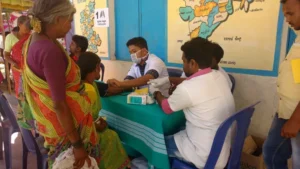World Health Day 2016 Theme: “Beat Diabetes” – A Global Call for Action
The World Health Day 2016 theme was “Beat Diabetes”, aimed at raising awareness about diabetes prevention and management. The World Health Organization (WHO) focused on promoting healthy lifestyles, early diagnosis, and better treatment options. The campaign encouraged governments and individuals to take action in reducing the global impact of diabetes.
World Health Day is celebrated every year on April 7 to raise awareness about important health issues. In 2016, the World Health Organization (WHO) chose the theme “Beat Diabetes” to highlight the growing problem of diabetes worldwide and encourage prevention, treatment, and management of the disease. The campaign aimed to educate people about the risks of diabetes, ways to prevent it, and how to live a healthy life even with the condition.
This article explores the significance of World Health Day 2016, the impact of diabetes on global health, steps to prevent diabetes, and how people around the world responded to the campaign.
Table of Contents
What is World Health Day?
World Health Day is an annual event established by WHO to draw attention to major health challenges. Each year, WHO selects a theme based on pressing global health concerns. Governments, healthcare organizations, and individuals participate in activities, discussions, and awareness campaigns to promote better health for everyone.
Why Was Diabetes Chosen as the Theme for 2016?
Diabetes is a serious health condition that affects millions of people worldwide. In 2016, WHO reported that around 422 million people had diabetes, and the numbers were rising rapidly. The theme “Beat Diabetes” was chosen to:
- Increase awareness about diabetes and its complications.
- Encourage people to adopt healthier lifestyles.
- Promote early diagnosis and treatment.
- Highlight the role of governments in creating policies that support diabetes prevention and care.
Understanding Diabetes
What is Diabetes?
Diabetes is a condition that occurs when the body cannot properly process sugar (glucose) from food. This happens due to either insufficient production of insulin (a hormone that regulates blood sugar) or the body’s inability to use insulin effectively.
Types of Diabetes
- Type 1 Diabetes: A condition where the body does not produce insulin. It is usually diagnosed in children and young adults.
- Type 2 Diabetes: The most common type, where the body does not use insulin properly. It is often linked to obesity and an unhealthy lifestyle.
- Gestational Diabetes: A temporary condition that occurs during pregnancy and increases the risk of developing type 2 diabetes later in life.
Symptoms of Diabetes
- Frequent urination
- Extreme thirst
- Unexplained weight loss
- Fatigue and weakness
- Blurred vision
- Slow healing of wounds
The Global Impact of Diabetes
- Diabetes is a leading cause of blindness, kidney failure, heart attacks, and strokes.
- It affects people of all ages and backgrounds.
- The number of diabetes cases has quadrupled since 1980 due to unhealthy diets, lack of physical activity, and obesity.
- It places a huge financial burden on individuals and healthcare systems worldwide.
How Can We Prevent Diabetes?
The good news is that type 2 diabetes can often be prevented or delayed with simple lifestyle changes. Here are some steps to reduce the risk:
1. Eat a Healthy Diet
- Avoid sugary drinks and processed foods.
- Eat more fruits, vegetables, whole grains, and lean proteins.
- Reduce salt and unhealthy fats.
2. Stay Active
- Engage in at least 30 minutes of exercise most days of the week.
- Walk, run, cycle, or participate in any physical activity you enjoy.
3. Maintain a Healthy Weight
- Obesity is a major risk factor for diabetes.
- Losing even 5-10% of body weight can significantly reduce diabetes risk.
4. Avoid Smoking and Limit Alcohol
- Smoking increases the risk of type 2 diabetes.
- Excessive alcohol consumption can lead to weight gain and other health issues.
5. Get Regular Health Check-ups
- Routine blood sugar tests help detect diabetes early.
- Early diagnosis can prevent complications and improve quality of life.
How the World Responded to World Health Day 2016
WHO’s Global Campaign
WHO organized various activities to spread awareness about diabetes:
- Launched reports on global diabetes trends.
- Conducted webinars and health talks.
- Shared educational materials on social media.
Government Initiatives
Many countries took action by:
- Introducing healthier food options in schools.
- Encouraging exercise programs.
- Providing free diabetes screenings.
Public Participation
People around the world joined the campaign by:
- Running marathons and fitness challenges.
- Attending educational events.
- Sharing diabetes prevention tips on social media.
The Lasting Impact of World Health Day 2016
- Governments implemented better diabetes care policies.
- More people became aware of diabetes and its prevention.
- Research on diabetes treatment and management gained momentum.

Frequently Asked Questions (FAQs)
1. What was the theme of World Health Day 2016?
The theme of World Health Day 2016 was “Beat Diabetes”, focusing on raising awareness about diabetes and promoting its prevention and treatment.
2. Why was diabetes chosen as the focus for 2016?
Diabetes was chosen because it affects millions worldwide, and its cases were rising rapidly. WHO aimed to educate people on how to prevent and manage the disease.
3. What are the main causes of diabetes?
Diabetes is caused by factors such as genetics, obesity, unhealthy diets, lack of physical activity, and insulin resistance.
4. How can I prevent type 2 diabetes?
You can prevent type 2 diabetes by maintaining a healthy diet, exercising regularly, managing weight, avoiding smoking, and getting regular health check-ups.
5. How does diabetes affect the body?
Diabetes can cause complications like heart disease, kidney failure, vision loss, nerve damage, and poor wound healing.
6. How did WHO spread awareness on World Health Day 2016?
WHO organized global campaigns, released research reports, conducted seminars, and shared educational materials online to raise awareness about diabetes.
7. What was the global impact of World Health Day 2016?
The campaign led to better diabetes policies, increased awareness, improved healthcare access, and more research on diabetes management and treatment.
8. How can governments help in the fight against diabetes?
Governments can promote healthy lifestyles, provide free screenings, implement nutrition programs, and invest in better healthcare infrastructure.
9. What are the symptoms of diabetes?
Common symptoms include frequent urination, extreme thirst, weight loss, fatigue, blurred vision, and slow healing of wounds.
10. Is diabetes curable?
There is no permanent cure for diabetes, but it can be effectively managed with lifestyle changes, medications, and regular medical care.
Conclusion
World Health Day 2016 was a powerful movement that brought global attention to diabetes. The theme “Beat Diabetes” encouraged individuals, communities, and governments to take action against the disease. By making healthier choices and staying informed, we can reduce the risk of diabetes and create a healthier future for everyone.
Remember: Small changes in daily habits can make a big difference in preventing and managing diabetes. Let’s continue to spread awareness and work towards a healthier world!
Discover the theme of World Health Day 2016 – ‘Beat Diabetes’. Learn how this global campaign raised awareness about diabetes, its prevention, and management. Stay informed with key insights and expert analysis!”













